Get PeakVisor App
Sign In
Search by GPS coordinates
- Latitude
- ° ' ''
- Longitude
- ° ' ''
- Units of Length

Yes
Cancel
Share ×

Scan the QR code and open PeakVisor on your phone
❤ Wishlist ×
Choose
Delete
Legend has it that the Tuscan Archipelago in western Italy was born from Venus’ necklace, which broke when she emerged from the Tyrrhenian Sea. It’s said that Venus’ broken necklace produced seven pearls that fell into the water, forming the islands we see today. There are 112 named mountains in Tuscan Archipelago National Park, the highest and most prominent of which is Monte Capanne (1,019 m/3,343 ft).
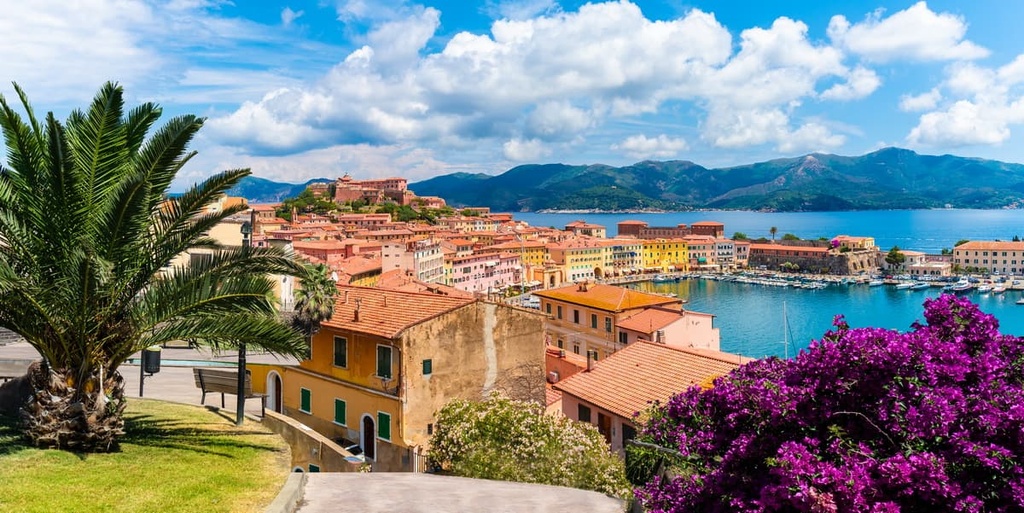
Located in the Italian region of Tuscany in the Tyrrhenian Sea, Tuscan Archipelago National Park (Parco Nazionale dell'Arcipelago Toscano) is a protected area that encompasses its namesake islands and part of the surrounding ocean.
The park is located in the provinces of Grosseto and Livorno in the southwestern part of Tuscany. It encompasses the municipalities of Campo nell'Elba, Capoliveri, Capraia Isola, Isola del Giglio, Livorno, Marciana, Marciana Marina, Porto Azzurro, Portoferraio, and Rio.
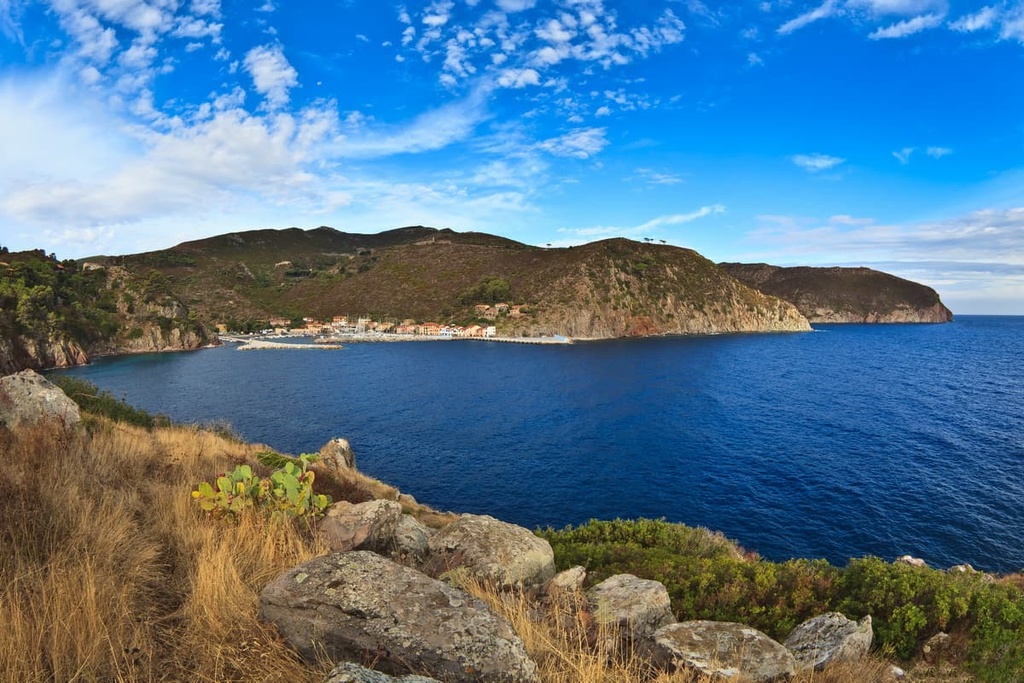
There are seven main islands within Tuscan Archipelago National Park, the largest of which is Elba. Elba is also Italy’s third-largest island after Sicily and Sardinia. The main islands in the archipelago are:
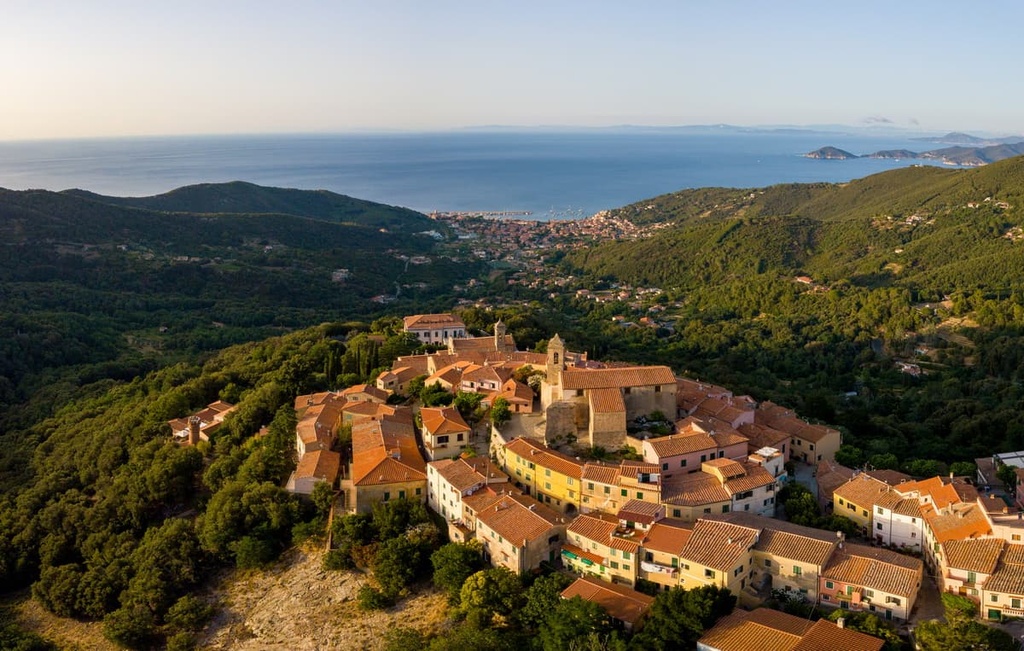
The total land area protected in the park is 178 sq. km (69 sq. mi). Additionally, the park protects 567 sq. km (218 sq. mi) of water around the archipelago. The waters surrounding the park are also part of the Sanctuaire Pelagos, an international protected maritime area.
The formation of the Tuscan Archipelago is closely linked with the formation of the Apennines, which began to take shape around 20 million years ago. The creation of the Apennines resulted from the collision of the African and European tectonic plates after the formation of the Alps.
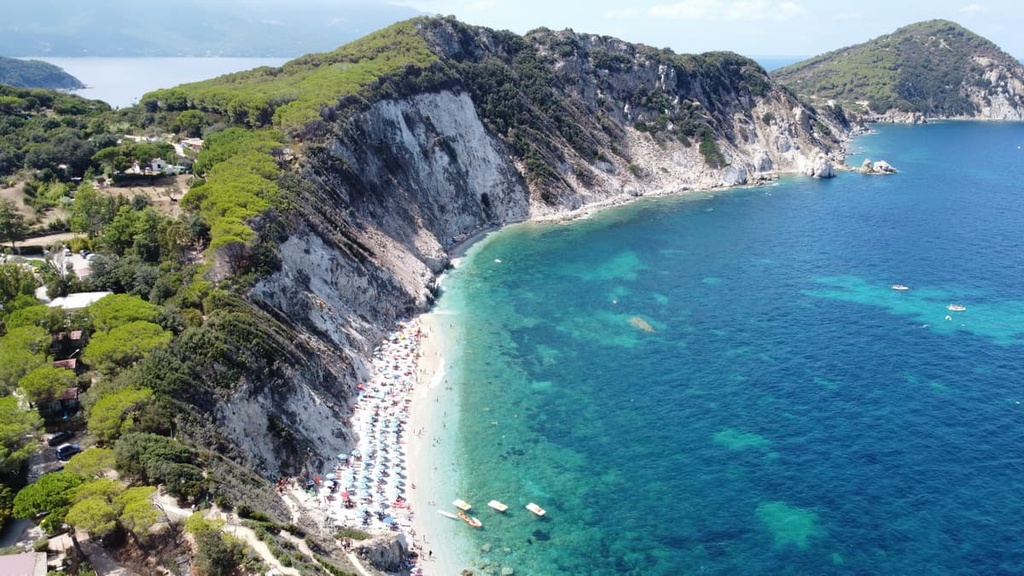
The origin of the Tuscan Archipelago dates back to the Triassic period, though some of the rocks found in the area are a fragment of the African continent and are thought to be at least 400–500 million years old. These rocks were shaped and formed during the Quaternary glaciations and they were eroded away by fluctuations in sea level until they emerged into the islands that we see today.
The islands of the Tuscan Archipelago boast a variety of different rock compositions. For example, Giglio and Elba are mostly granitic in composition, but you can find basalts, rhyolites, sandstones, limestones, gneisses, and marbles on many of the archipelago’s other islands.
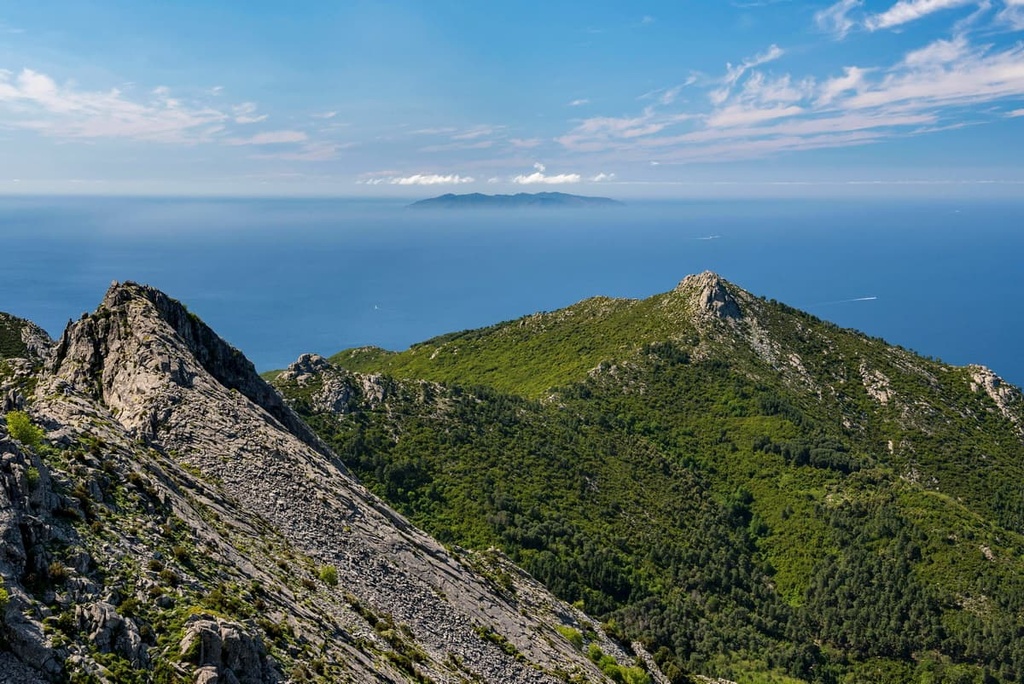
Of all of the islands in the archipelago, Elba is arguably one of the most interesting from a geological perspective. The island features a number of iron ore deposits and it is home to the highest mountain in the national park, Monte Capanne. It also boasts some 150 different varieties of crystals, many of which are now held in science museums around the world.
The islands of the Tuscan Archipelago National Park are mountainous and hilly, and they feature a Mediterranean climate. They’re home to an interesting mix of flora and fauna, including some endemic species. Here’s a quick look at the ecology of the park and some of the species you might encounter in the archipelago during your next visit.
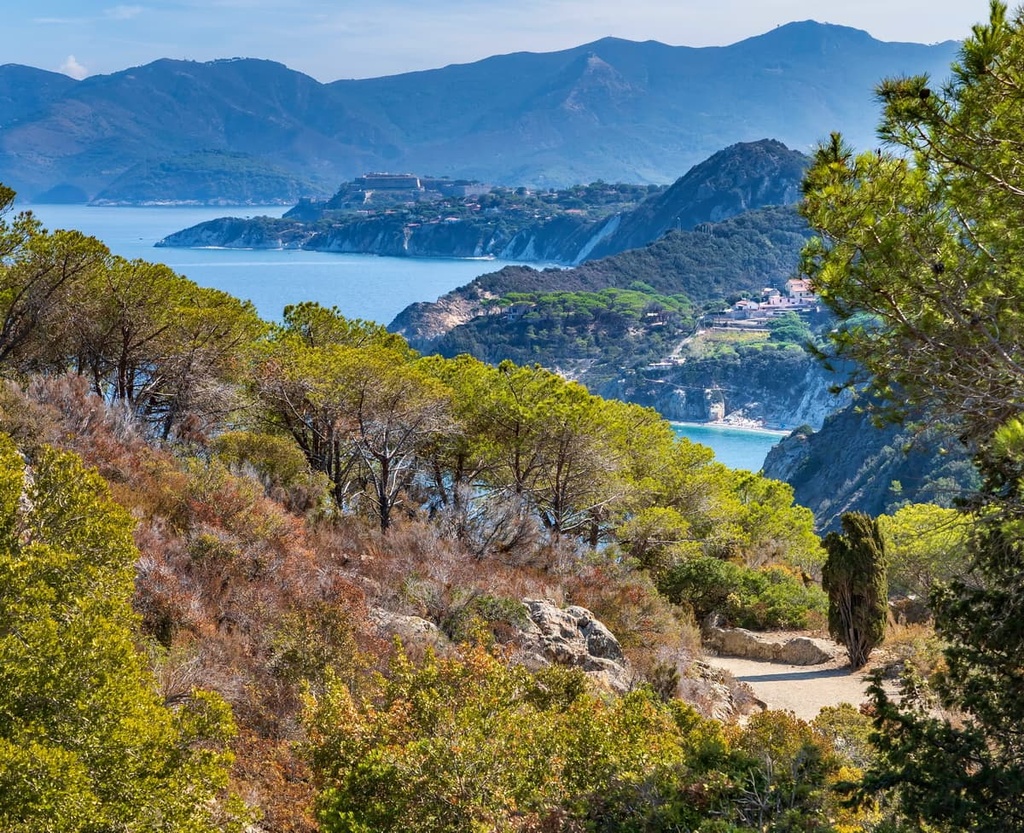
The flora of the Tuscan Archipelago has been greatly influenced by the isolation of the islands from the mainland.
As the archipelago has a typical Mediterranean climate, its vegetation consists mostly of plants with leathery leaves that are protected by a robust and impermeable outer layer. Maquis-type shrublands are very common on the archipelago, though other vegetation that you can find across the islands include buckthorn, mastic tree, myrtle, heath, rosemary, lavender, and brooms.
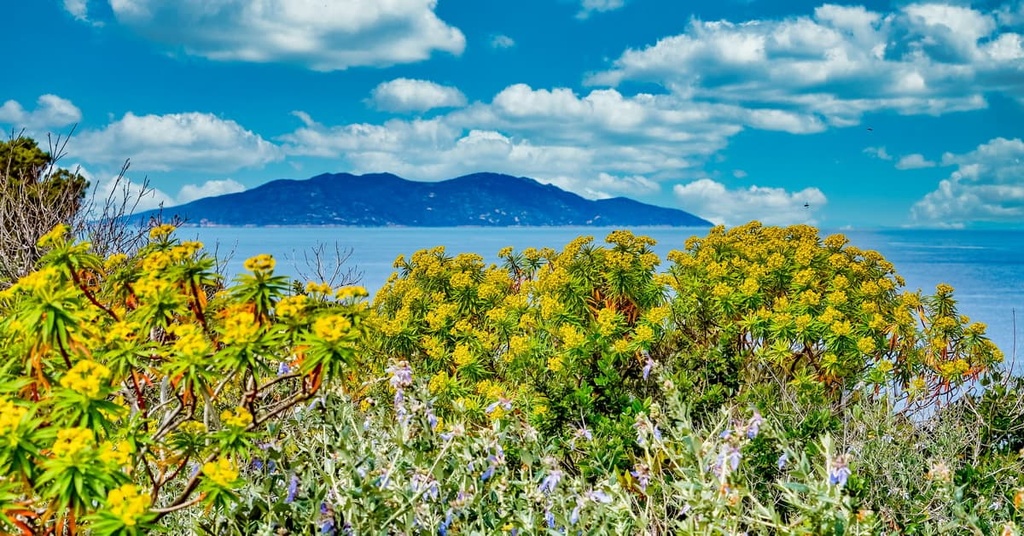
Additionally, there are small stands of holm oaks and chestnut woodlands in the park. In the more mountainous parts of the islands, you can also find stands of European yew and hop-hornbeam.
Tuscan Archipelago National Park is home to several endemic animal species. Some of the most interesting animals that live in the park include the Citril finch, Sardinian tree frog, Tyrrhenian painted frog, and leaf-fingered gecko.
Mammals in the park include a wide range of typical Mediterranean species, such as martens, mouflons, and rabbits. There’s also a butterfly sanctuary in Elba where you can see some of the 50 different species of butterfly that have been recorded in the area to date.
The archipelago is also a nesting point for many migratory birds. There are colonies of shearwaters and seagulls on the archipelago’s islands. One of the most notable seabirds in the region is the Audouin’s gull (Ichthyaetus audouinii), a threatened species found only in the Mediterranean that also happens to be a symbol of the park.
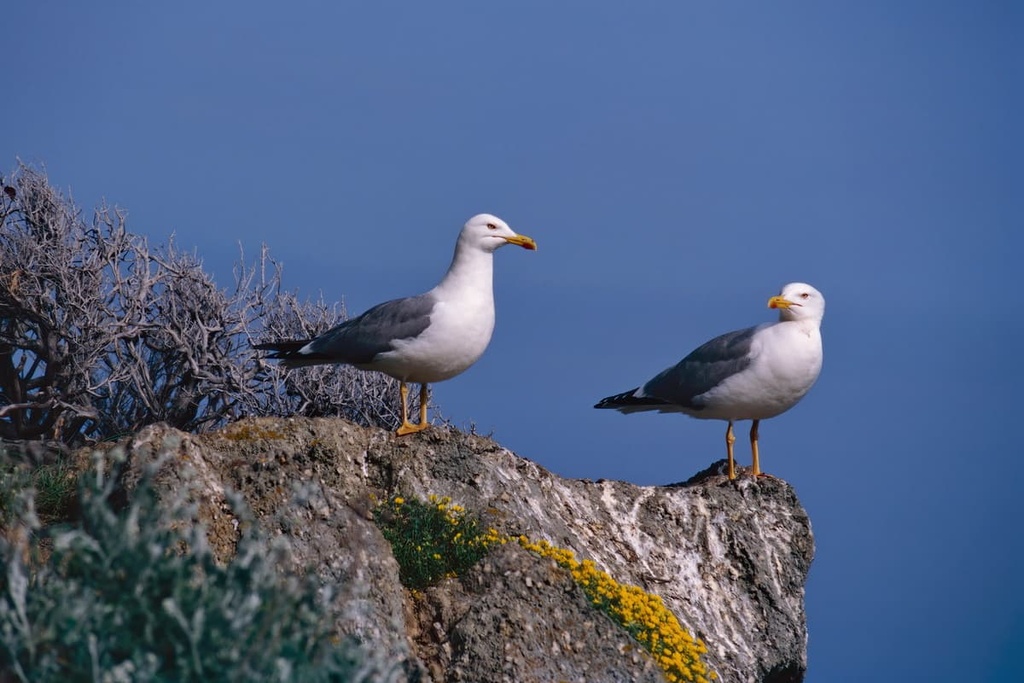
In addition to the archipelago’s terrestrial ecosystems, the park also encompasses a huge protected marine area that has its own unique ecology. This marine area is part of the 87,500 sq. km (33,780 sq. mi) Pelagos Sanctuary (Sanctuaire Pelagos), which was set up in 1999 to protect the area between Italy, France, and the principality of Monaco.
Although the species you’ll find across the sanctuary can differ, near the Tuscan Archipelago, you might be able to see fin whales, long-finned pilot whales, sperm whales, Cuvier’s beaked whales, common dolphins, striped dolphins, Risso’s dolphins, and bottlenose dolphins, among other marine mammals.
Within Tuscan Archipelago National Park, there are a number of important archeological sites. Researchers believe that the islands had long been a stopping point among people traveling between Sardinia, Corsica, and the Italian Peninsula.
The history of Elba, in particular, is closely linked to its iron mine, which was open until the twentieth century. Mining activity likely began on the island during the height of the Etruscan civilization (around 800 to 400 BCE) and the practice was continued by the Romans after they conquered the area.
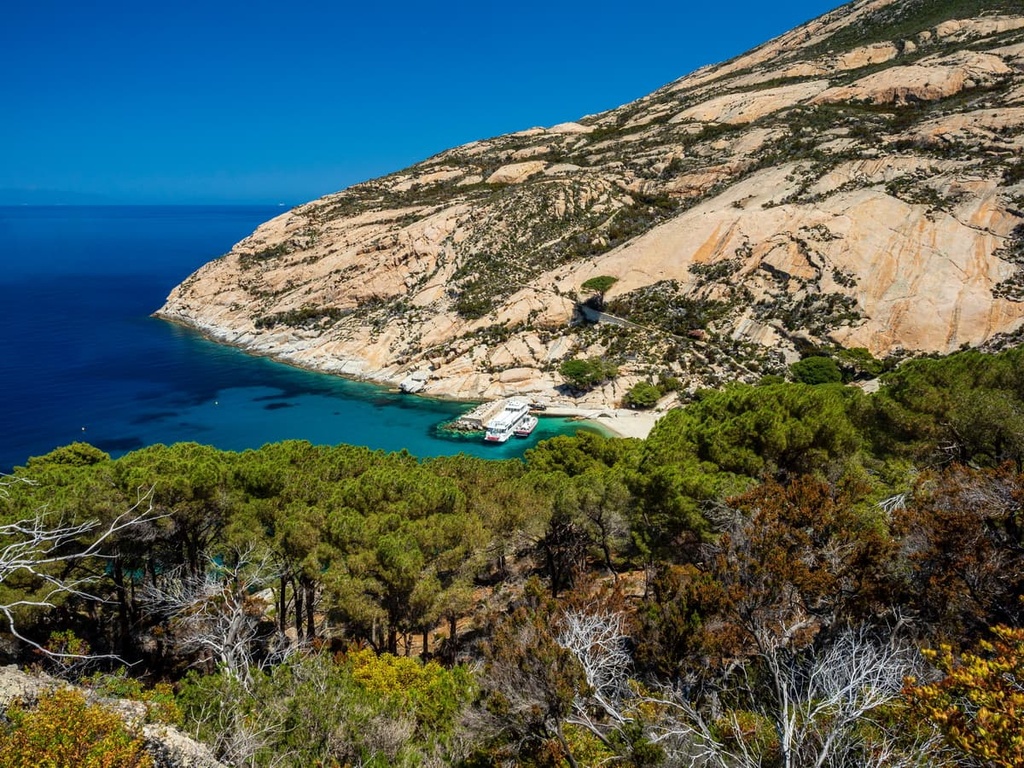
The Etruscans used the island's hills, like Volterraio, to build sighting posts. These sighting posts were part of a system of fortified hill villages that the Etruscans may have used to communicate by lighting fires. Volterraio also boasts the recently restored ruins of Volterraio Castle, which is an important historic site.
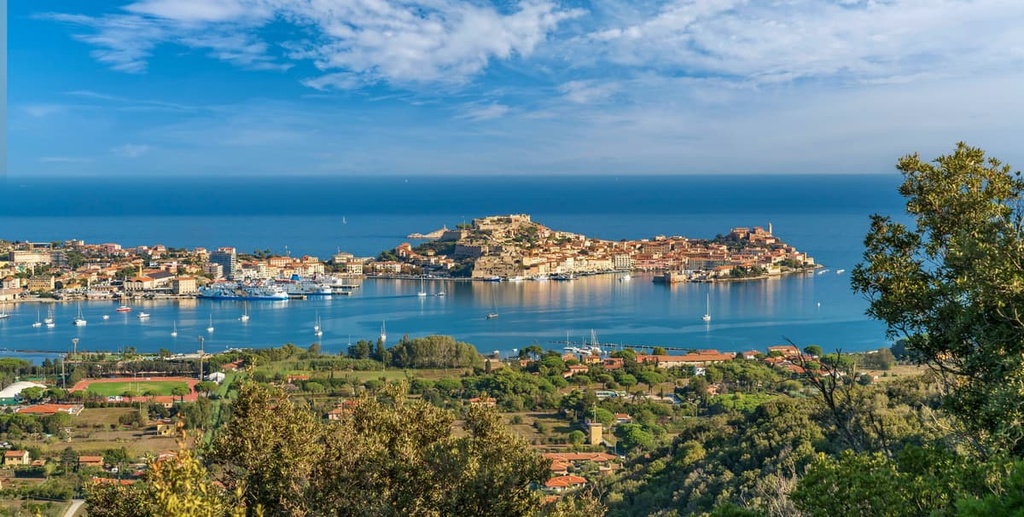
The castle itself was constructed much more recently (around 1000 CE) on top of Etruscan and Roman remains. It was then rebuilt by the Pisans in the thirteenth century, though it eventually fell into a state of disrepair. The national park purchased the island in the twenty-first century, restored it, and re-opened it to the public.
That said, the isolation of the Tuscan Archipelago has meant that the archipelago’s islands were used for a variety of different purposes over the years, such as imprisonment.
In fact, the island of Pianosa was actually used as the site of a penal colony in the mid-nineteenth century. The Pianosa penal colony was primarily used for convicts with tuberculosis because the island's remoteness allowed prison wardens to separate sick inmates from other prisoners.
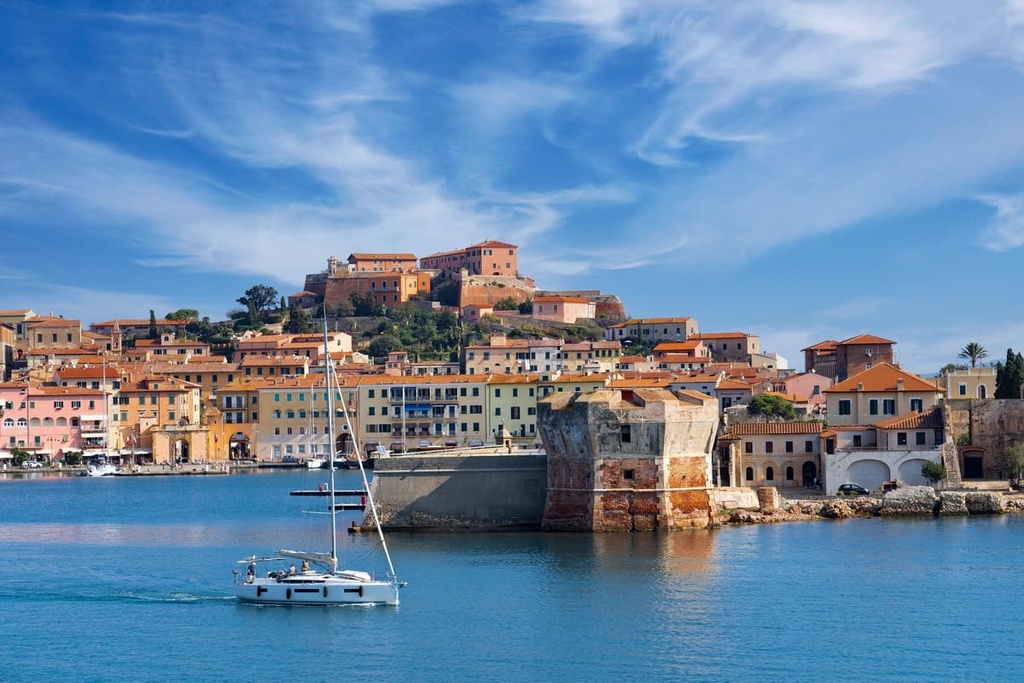
During World War II, the island of Pianosa was occupied by Nazi troops. After the war, it became a penal colony once again, until it was transformed into a maximum-security prison. Many high-profile Mafia bosses were even imprisoned on the island until the prison complex was shut down in the late 1990s.
Although Pianosa’s penal colony was shut down in the 1990s, penal colonies still exist on the archipelago to this day. On Gorgona, there’s a prison farm called the Gorgona Agricultural Penal Colony that’s been in operation since the 1860s.
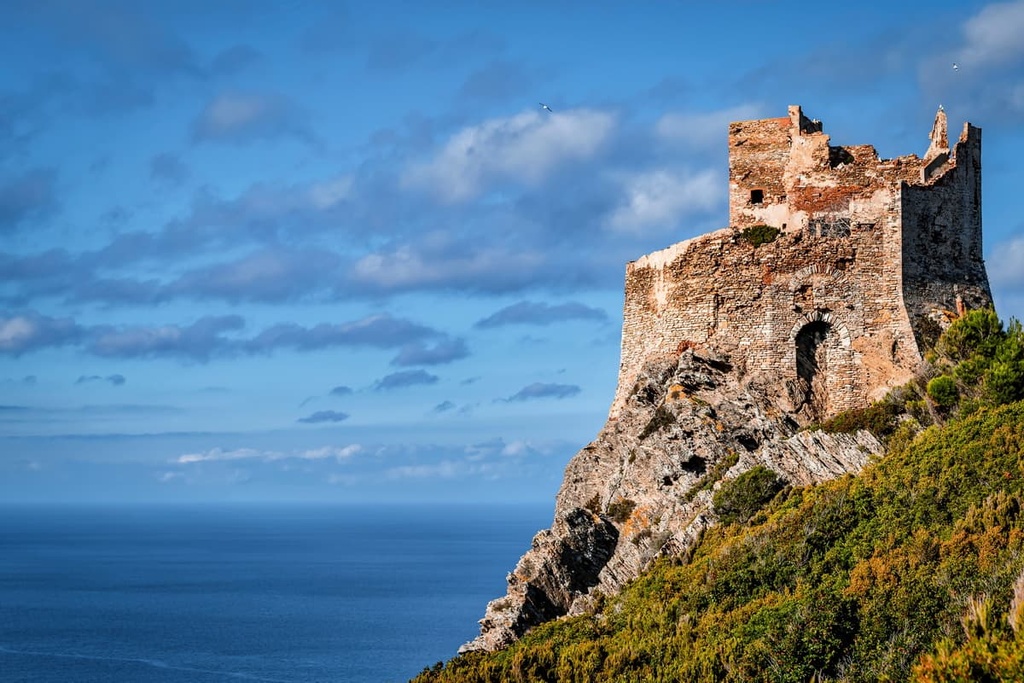
Approximately 100 inmates currently live on the island, most of whom have been convicted for violent crimes. There’s actually a waiting list for transfer to the island because the penal colony affords inmates more opportunities than they might otherwise have in prison.
On Gorgona, the inmates are tasked with tending to the colony’s farm animals and vegetable garden. They also maintain an olive tree grove that produces olive oil and they work on a vineyard that’s owned by the Frescobaldi family. The wines produced by the inmates are typically of high quality and they’re sold at some Michelin-starred restaurants in Italy.
Most of the inmates on the island are nearing the end of their sentences so the agricultural side of the colony is designed to help them gain valuable skills that they can use in their life after release. Due to the fact that the island is a working prison, however, only 75 visitors are allowed to visit per day and they must travel with a certified nature guide.
Besides Gorgona, most of the islands in the Tuscan Archipelago have tourism-based economies.
However, some of the islands have highly restrictive access regulations due to their protected environment. The island of Montecristo, for example, only accepts 1,000 visitors a year. Giannutri can only be visited by the public during the summer months, and Pianosa is open only to a limited number of guided visits.
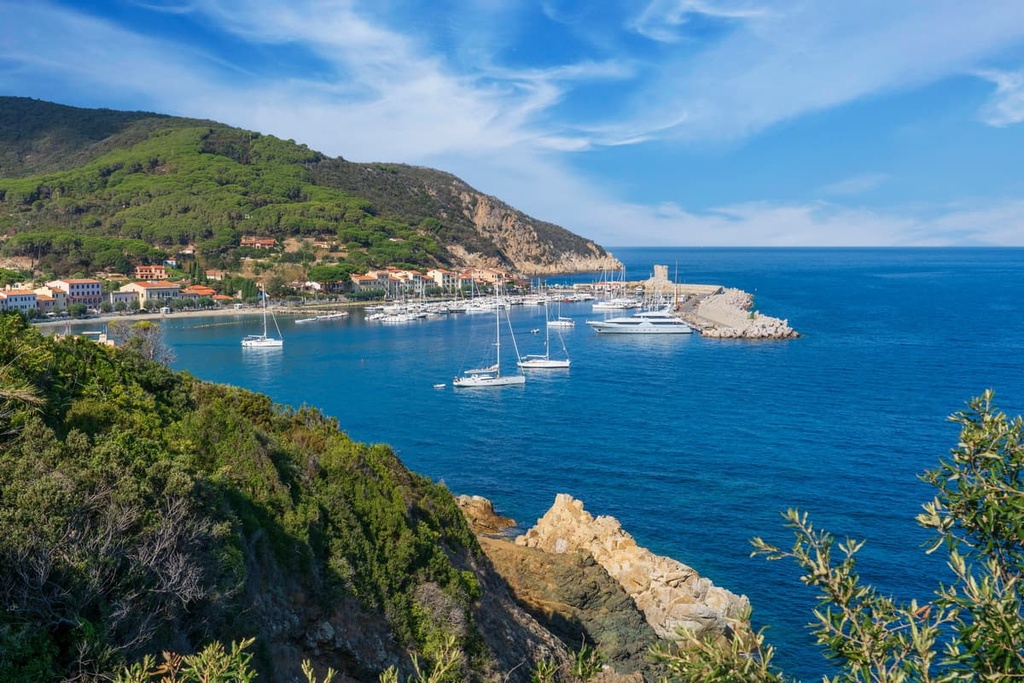
At Tuscan Archipelago National Park, you can enjoy a huge variety of hiking trails while enjoying the turquoise sea that surrounds the Tuscan archipelago. The park offers a number of hiking options, most of which are suitable for families, though others are geared towards more experienced hikers.
Here’s a quick look at the best hikes in Tuscan Archipelago National Park to help you plan your next trip to the region.
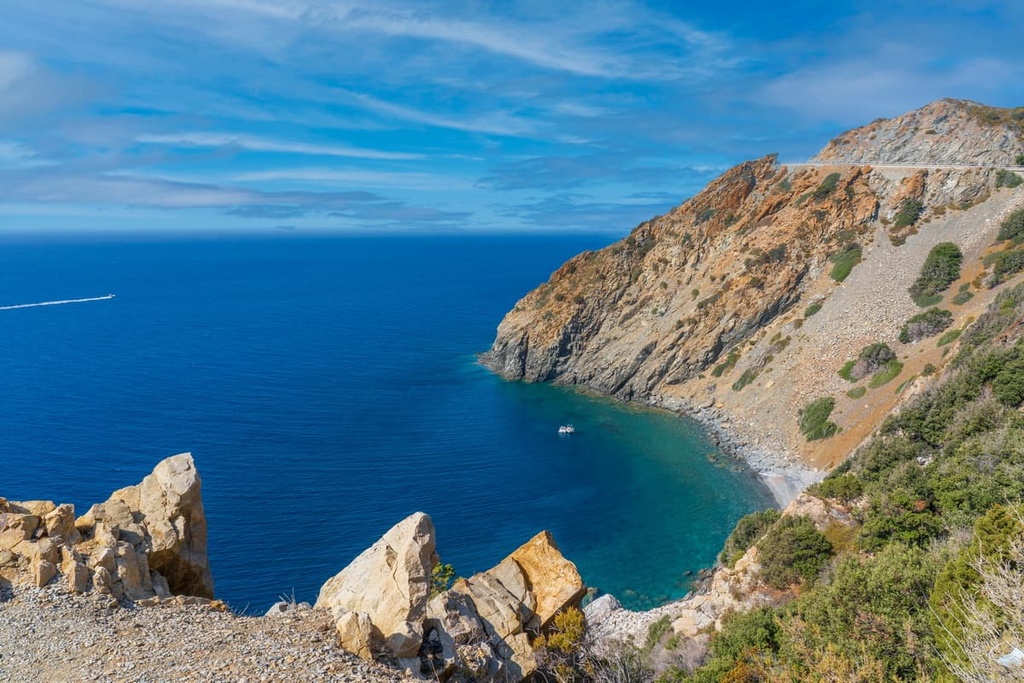
The Grande Traversata Elbana (GTE), or Great Elba Crossing, is a trail that crosses the island of Elba. Described as spectacular, difficult, and tiring, the route starts at the town of Cavo on the northeastern coast of the island and follows the mountainous backbone of the Elba as it makes its way to the island’s west coast.
Eventually, the trail brings you to Monte Capanne (the highest peak in the park), where you will have a choice between two routes. One route goes southward to Pmonte in the southwestern part of the island while the other takes you to Patresi, which is located in the northwestern section of Elba.
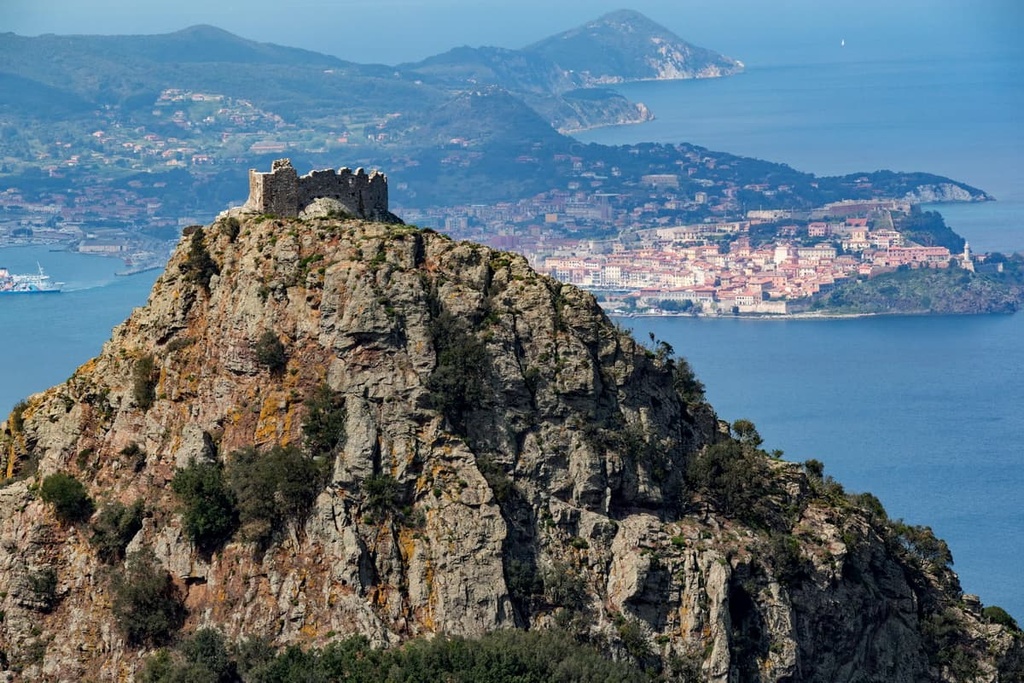
Keep in mind that most people take about 3 days to complete this hike, which is about 50 km (31 mi) long, depending on which route you take. If you complete this hike over the course of multiple days, you can stop for the night in any of the towns along the trail, including Procchio and Porto Azzurro.
The Calamita Trail is a loop hike in Elba that starts at Capoliveri and takes you up and around Monte Calamita. This trail is actually used for a trail running race each fall, so it’s a fairly popular destination on the island.
For the most part, the trail follows a series of old mining paths, though there are a lot of crisscrossing single-track paths on Monte Calamita. As a result, you can either follow the official race route, which is about 20 km (12.4 mi) long, or you can create your own hiking adventure on the mountain.
The Granite Way Trail is a loop hiking route on Elba that starts and ends in San Piero. It is about 9 km (5 mi) long and it takes most people around 3 hours to complete. The trail traverses the southeastern side of Monte Capanne, and it is popular because it takes you to see several archeological sites on the island.
For this hike, you’ll start in San Piero, where the island’s last remaining stone cutters still extract granite from the landscape. Then, you’ll take path 195 from the parking lot, which overlaps with the road to the quarries. After the last quarry, you’ll turn right onto path 133 and then 135B on the right. This area is covered with maquis and white-flowered rock roses that are rich in essential oils.
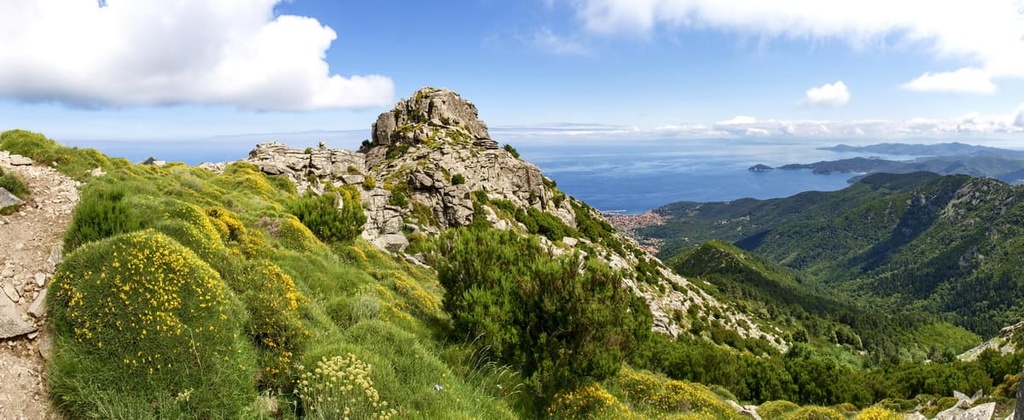
The path takes a slight uphill before joining path 135. Then, you’ll turn left to reach Mulino di Moncione, Elba’s largest mill. Afterward, you’ll walk down path 134A, where you can make a small detour on the right to an old burial site dating back to 900 BCE.
Finally, you’ll head back on the original path and continue downhill, passing shepherd huts along the way. On the last leg of this trail, you’ll also have the opportunity to make a side trip to some ancient quarries (Cave Antiche) and a grinding stone (La Macina) before heading back to San Piero.
The hike from Marciana Marina to Sant’Andrea is a more demanding five-hour trek in Elba that traverses 12 km (7 mi) of terrain and has 633 m (2,076 ft) of elevation gain.
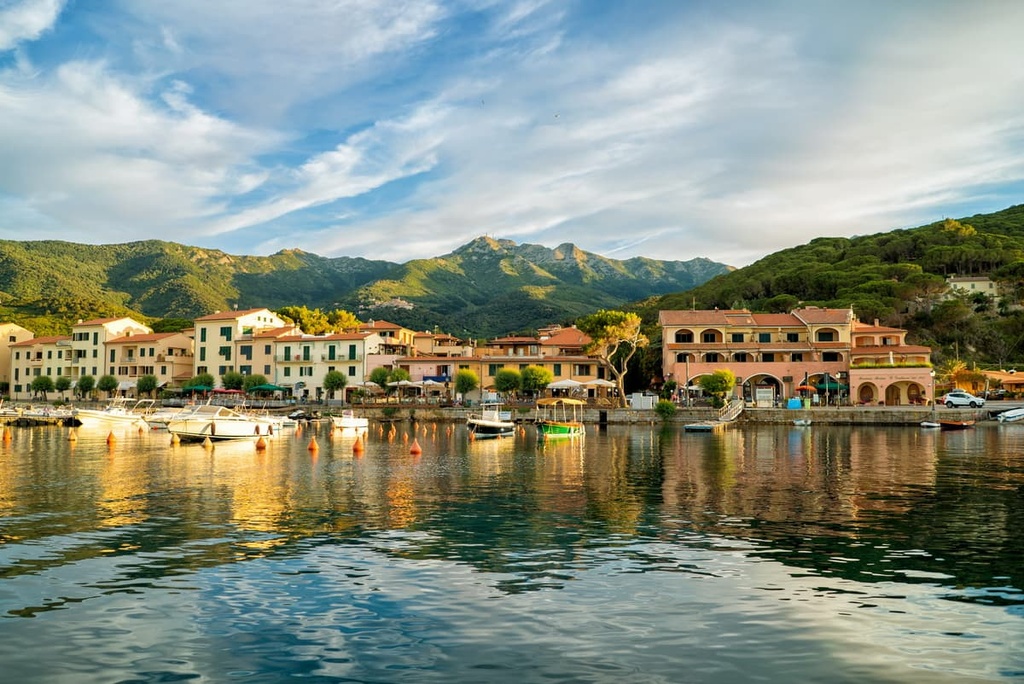
On this hike, you’ll walk along a shaded trail (path 150) from Marciana Marina, following the northwestern coast of Elba. After a short uphill section, the path briefly merges with the road for around 500 m (1,640 ft).
Here, you can take path 150A to a panoramic point overlooking Punta della Madonna and Punta del Nasuto. These points are known nesting spots for the Audouin gull, which is the symbol of the park.
As you make your way back to the original route, you’ll walk past the junction with path 150F and take 150B to visit Ripa Barata beach. The road ends after the junction and merges back into a path, where it winds past rural houses before ascending to Maciarello.
Once you reach Maciarello, the path merges again briefly with a road before heading to the pretty beach of Cotoncello. The path then continues along the cliff before ending at the beach in Sant’Andrea.
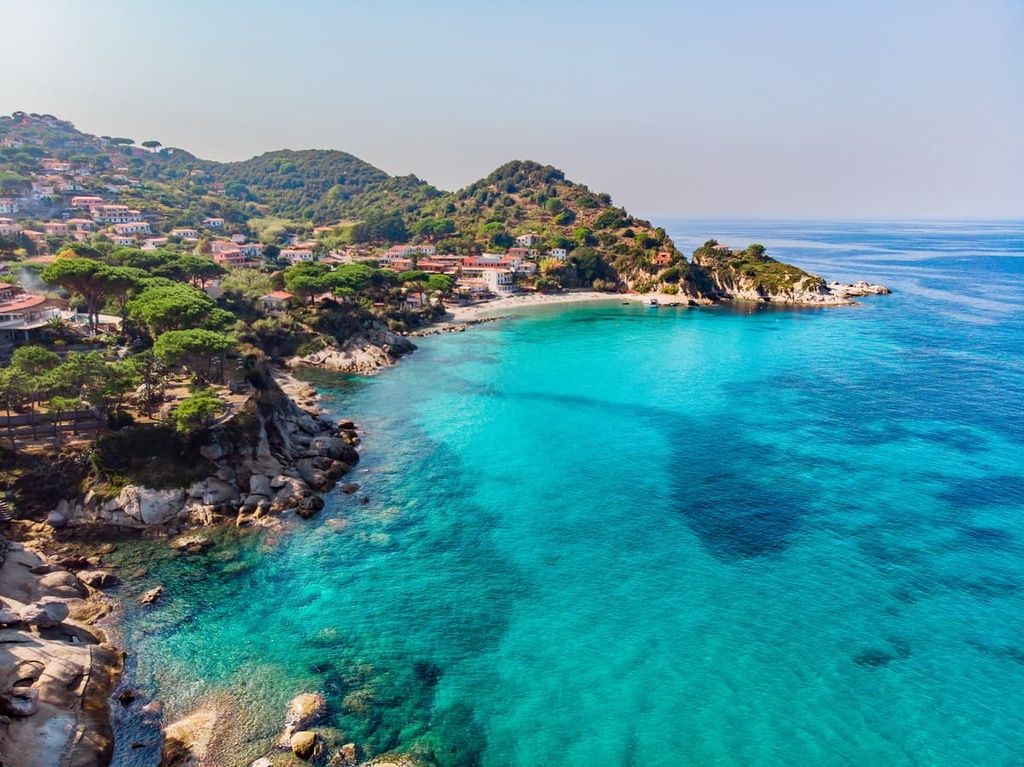
The Monserrato Sanctuary Trail is a challenging 9.6 km (5 mi) hike that takes around four hours to complete. This circular route begins and ends in Porto Azzurro in Elba. The path is wide and easy to walk along, although some stretches near Monte Castello are more exposed, and, therefore, are only suitable for experienced hikers.
To start this hike, you'll take path 222 (known as the Carmignani Walk), which begins at the foot of San Giacomo (Fort Longone). San Giacomo is an ancient fortress that’s currently used as a prison. The walk follows its walls before descending to the sea near Barbarossa beach.
From Barbarossa beach, you’ll take path 224 inland and then cross road 26 into the Monserrato Valley. Afterward, you’ll join path 226, which leads to the Monserrato Sanctuary. From here, take path 225, which heads west and enters a pinewood before ascending gently uphill. The path then leaves the woodland and traverses some rocky terrain.
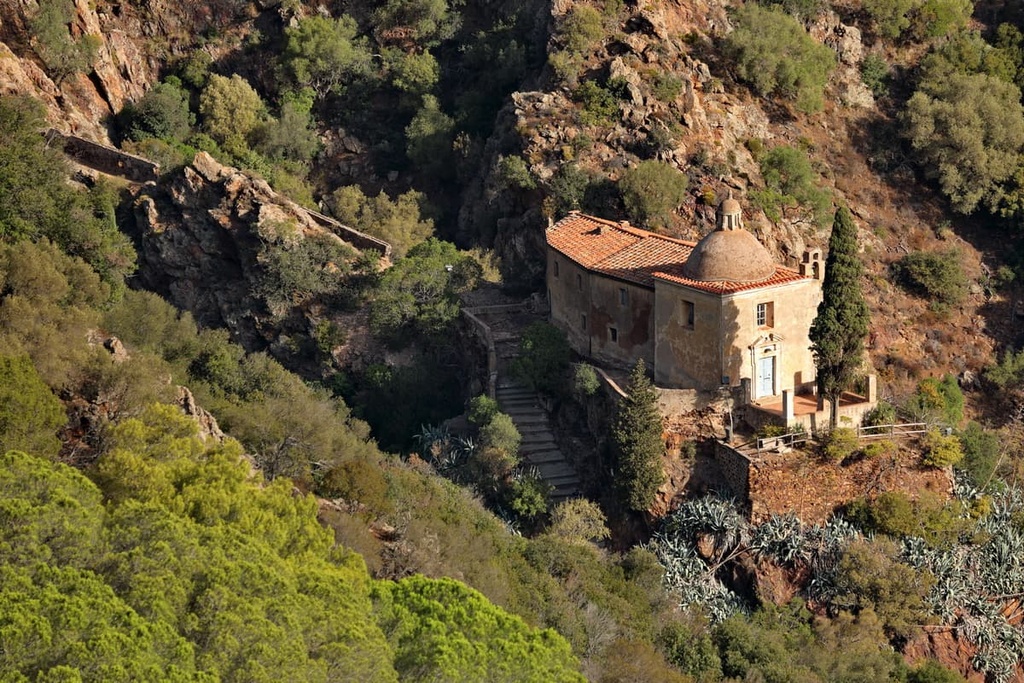
At the next intersection, path 225 continues left toward a cross that overlooks the valley. Next, you’ll take trail 218 and then 205, which is where the trail is more demanding, and cross the GTE. Finally, you’ll head south and continue downhill until you’re back in Porto Azzurro.
The Monte Capanne Trail is another demanding trail in Elba. This trail is 8.3 km (5 mi) long and it has 785 m (2,575 ft) of elevation gain, so it takes most people about 6 hours to complete. It begins in Marciana and reaches the top of Monte Capanne, before heading back down to the trailhead using a slightly different route.
For this trail, you’ll take path 101, a demanding path that begins at the gate of Sant'Agapito. The path leads through a chestnut woodland, past the hermitage of San Cerbone, and starts to head uphill.
The steepest stretch of this hike occurs after you cross the GTE. From here, you need a decent level of fitness to reach the top of the mountain. From the top, you can admire sweeping views over the Tuscan archipelago, the Tuscan coast, and Corsica.
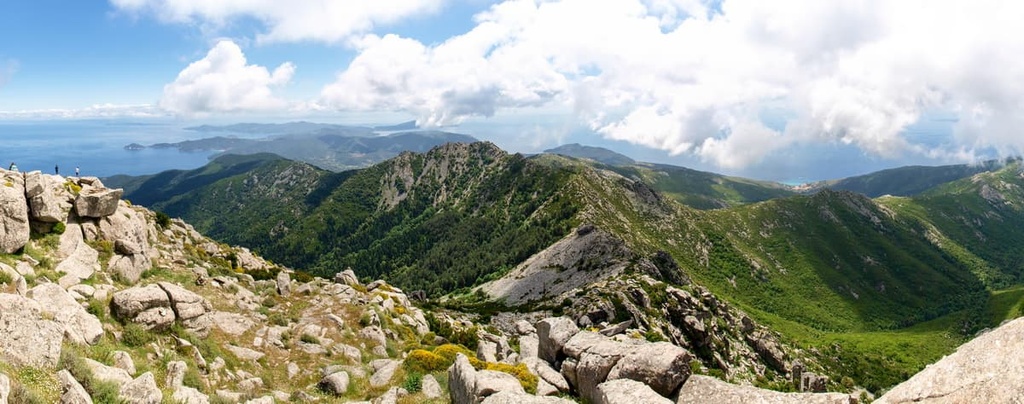
After you enjoy some time on the summit, you’ll head back down to the trailhead by following path 101 until you reach a junction where you go left on the northern GTE. This section of the trail is primarily a flat path made of granite slabs that takes you past plenty of strawberry trees. On the final part of the trail, you’ll take path 103 to get back down to Marciana.
There are plenty of places to stay in Elba, from hotels to B&Bs, and there are many other accommodation options that cater to tourists on the Tuscan mainland. Here are a couple of places to check out when visiting Tuscan Archipelago National Park.
The island of Elba is home to around 31,000 people, most of whom live in one of the island’s many comunes.
Many of Elba’s residents live in the community of Portoferraio, which is located on the north-central part of the island. There are a number of great attractions in Portoferraio for visitors to enjoy, including the scenic Portoferraio Lighthouse. While in Portoferraio, you can also visit the Villa dei Mulini and San Martino Villa, both of which were residences of Napoleon Bonaparte when he was exiled to Elba between 1814 and 1815.
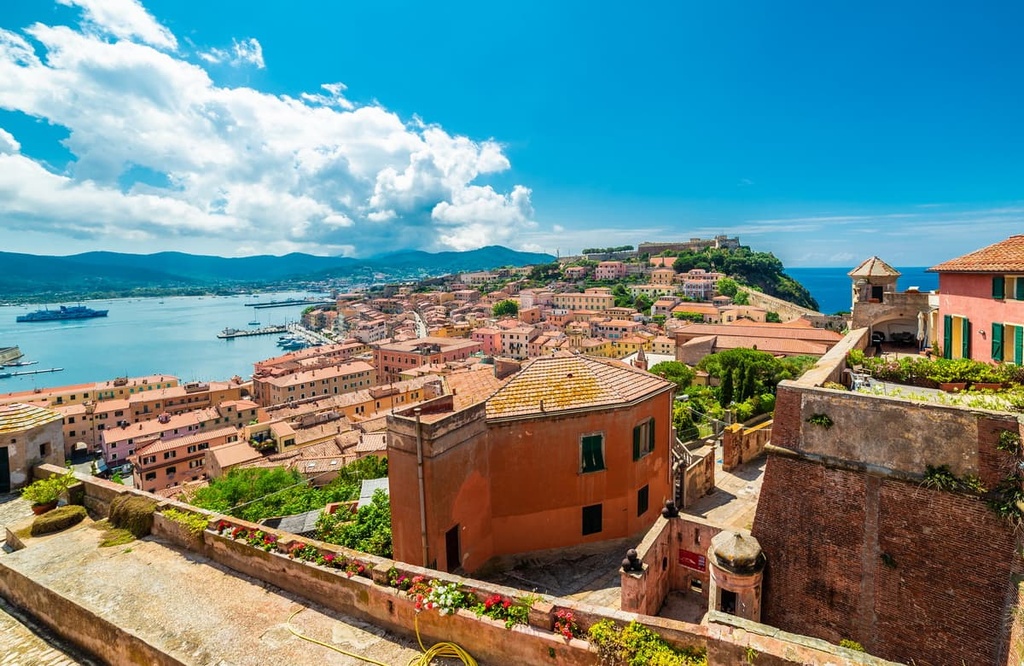
Other great communities to check out on Elba include Porto Azzurro, Cavo, Sant’Andrea, Campo nell'Elba, Marciana Marina, Rio, and Capoliveri. Many of Elba’s communities are located in close proximity to the park’s hiking trails, so it’s a great place to stay during any trip to Tuscan Archipelago National Park.
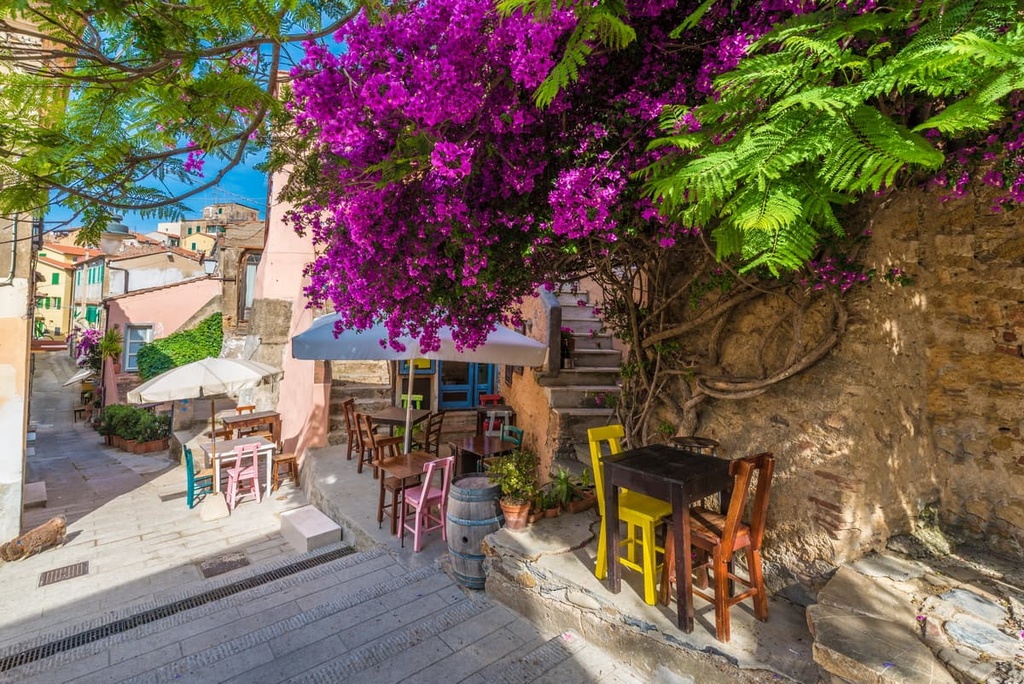
Located in the south of Tuscany near the coast, the community of Grosseto is a great access point for visits to the islands of Tuscan Archipelago National Park. Grosseto is also situated close to Maremma Regional Park, so it’s a nice place to stay if you’re looking to travel to various outdoor recreation areas in the region.
Other than visiting the islands, there are plenty of beautiful beaches to discover along the Tuscan coast near Grosseto. Grosseto itself is also a worthwhile destination as it features a number of stunning historic sites, like the Walls of Grosseto and the Grosseto Cathedral. You can reach Grosseto easily from Florence, Pisa, Rome, and Genoa by train.
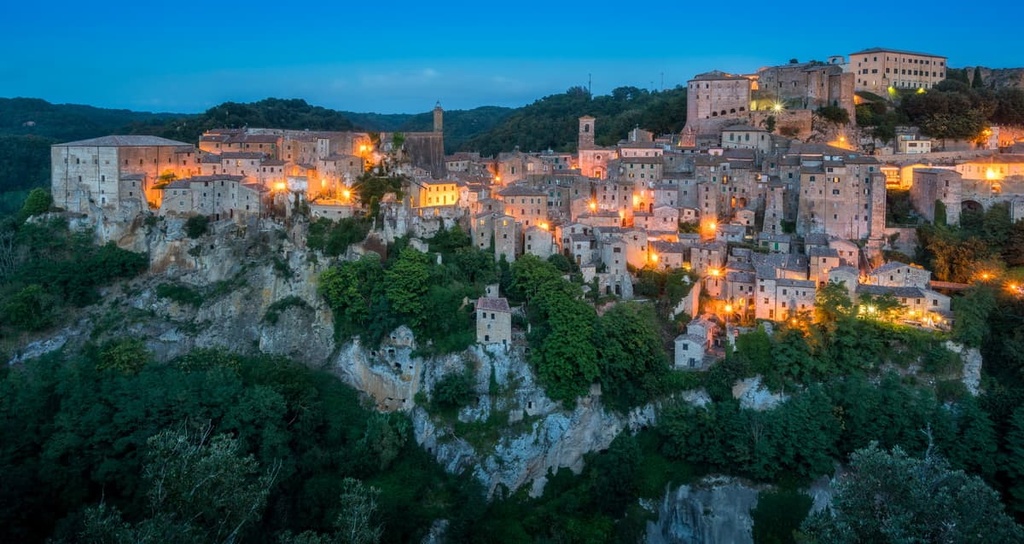
Orbetello is a unique town on the Tuscan mainland located on a thin strip of land that juts out into the Orbetello Lagoon. The community of Ortebello is now home to around 15,000 people, but it has a rich history that dates back to the time of the Etruscans.
While in Ortebello, you can visit the town’s historic center. You can also check out the Santa Maria Assunta Cathedral and the Spanish mill that sits in the middle of the lagoon. From Orbetello, you can even reach the island of Giglio by taking the ferry from the nearby Porto Santo Stefano.
Explore Tuscan Archipelago National Park with the PeakVisor 3D Map and identify its summits.








